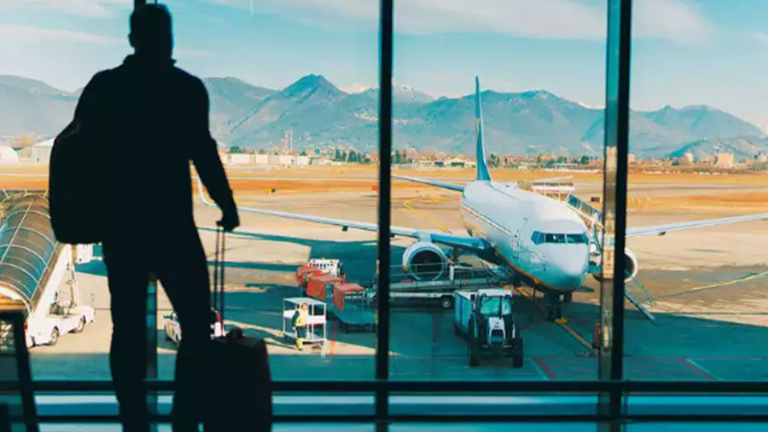‘Stay Away Longer’ Trend: Why 2025 is the Year of Extended Getaways and Slow Travel
The way people travel is constantly evolving, and 2025 is poised to be the year of extended vacations and slow travel. According to Skift Research’s 2025 Travel Outlook Report, there is a 24% increase in planned trips compared to 2024, signaling a strong post-pandemic shift towards longer and more immersive getaways.
This emerging trend, often referred to as the “stay away longer” movement, reflects a growing desire among travelers to spend extended periods in a single destination, forming deeper connections with local cultures, traditions, and environments. Unlike the traditional whirlwind vacations focused on sightseeing, travelers in 2025 are prioritizing quality experiences over rushed itineraries.
Why Travelers Are Choosing to Stay Longer
Experts suggest that several factors contribute to the rising preference for extended vacations. D.K. Ghatani, a travel consultant at Sikkim Expedition, highlights three key drivers:
- The Post-Pandemic Mindset
- The COVID-19 pandemic reshaped how people view travel, shifting the focus from hurried tourism to mindfulness and meaningful experiences.
- Travelers now prefer slower itineraries that allow them to fully explore a destination rather than hopping from one attraction to another.
- Financial Benefits
- Cost-efficiency plays a role in the decision to travel longer. Many travelers realize that extended stays reduce per-day expenses on accommodations, food, and transportation.
- Homestay platforms and hotels now offer discounts for long-term bookings, making slow travel an affordable option.
- Sustainability & Eco-Conscious Travel
- Staying in one place for a longer time lowers a traveler’s carbon footprint, as it reduces the need for frequent flights.
- Slow travel also benefits local economies, as tourists spend more time engaging with small businesses, local markets, and cultural experiences.
The Growth of ‘Bleisure’ Travel & Remote Work’s Role
One of the most influential factors driving longer stays is the rise of bleisure travel—a blend of business and leisure. The shift towards remote work and flexible schedules has made it easier for professionals to work from anywhere, allowing them to extend their travels without taking time off.
According to Ghatani, remote work has revolutionized travel habits, enabling individuals to blend professional responsibilities with exploration. “Remote work policies have granted professionals the freedom to travel without sacrificing their careers,” he explains. “Many digital nomads now prioritize accommodations with strong Wi-Fi, coworking spaces, and long-term rental options.”
However, while remote work has enabled extended stays, it also presents challenges such as maintaining productivity and establishing a balanced routine. To counter these, travelers are:
- Setting structured work schedules to maintain productivity.
- Choosing ergonomic workspaces to ensure comfort.
- Taking mindful breaks to balance work and exploration.
How the Travel Industry is Adapting
With the demand for slow travel growing, airlines, hotels, and travel companies are introducing new services and policies to cater to long-term travelers:
✅ Flexible Booking Policies: Airlines and hotels now allow flexible rescheduling, catering to travelers who want the option to extend their trips.
✅ Long-Term Stay Discounts: Homestay platforms such as Airbnb and Booking.com are offering special rates for digital nomads, families, and leisure travelers who book extended stays.
✅ Curated Local Experiences: Travel companies are designing immersive experiences such as cooking classes, language lessons, and cultural workshops, encouraging travelers to engage with the local culture.
✅ Eco-Friendly Travel Options: Many accommodations and destinations are focusing on sustainability by promoting public transport, reducing single-use plastics, and supporting local businesses.
Where is the Trend Most Popular?
While extended travel is gaining traction worldwide, certain countries stand out as hotspots for long-stay tourism. According to Skift Research, the trend is particularly strong in:
- China – A growing number of middle-class travelers are embracing longer international getaways.
- 🇮🇳 India – The rise of remote work and digital nomad culture has fueled demand for extended travel.
- 🇩🇪 Germany – German travelers have historically favored slow travel, and this trend is continuing into 2025.
Other regions, including Southeast Asia, Latin America, and Southern Europe, are also experiencing increased interest from long-stay travelers due to their affordability, digital nomad-friendly policies, and cultural richness.
The Future of Travel: Is Short-Term Tourism Fading?
Although traditional short-term vacations will continue to exist, the “stay away longer” trend suggests a fundamental shift in travel behavior. Instead of multiple short trips throughout the year, many travelers are now opting for one or two longer, more immersive experiences.
This change is being embraced not only by leisure tourists but also by business travelers, retirees, and young professionals who have the flexibility to work from different locations.
As travel becomes more intentional and quality-focused rather than quantity-driven, the industry will need to continue adapting its services to cater to travelers who seek deeper, more meaningful experiences.
Final Thoughts: Will You Be a Part of the Trend?
2025 marks a turning point in how we explore the world. Whether it’s working remotely from a tropical island, immersing yourself in a new culture for months at a time, or simply enjoying a longer, slower escape, this trend is here to stay.
If you’re planning your travels for 2025, perhaps it’s time to ditch the short vacation mindset and embrace the “stay away longer” movement. After all, why rush through a place when you can truly experience it? 🌍✈️






